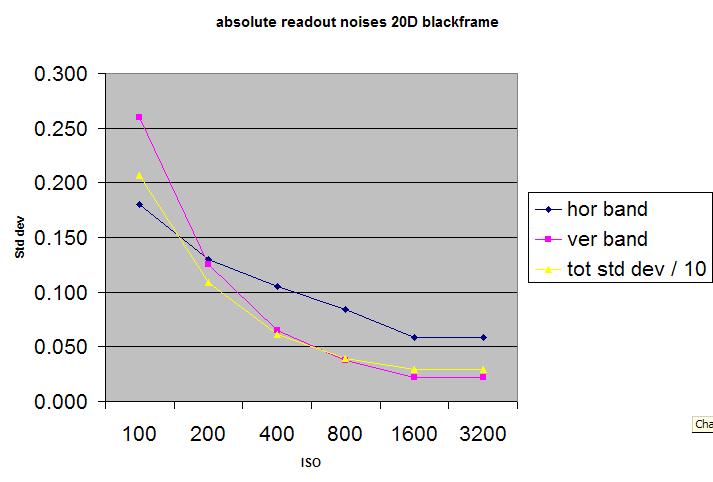According to Roger's table, read noise actually goes up at ISO 3200 and dynamic range is lower.[a href=\"index.php?act=findpost&pid=91759\"][{POST_SNAPBACK}][/a]
There is no ISO 3200 on any Canon. All Canon ISO 3200s are an illusion. They are ISO 1600, under-exposed by a stop, and then the RAW numbers doubled (or in the case of the 10D, the numbers are left alone as ISO 1600 numbers, which are 800 doubled, and it is assumed that a converter will recognize the need for a stop more software EC).
Doubling causes a stop of DR to be clipped away.
If you have other data, I would be interested in seeing them.
This is read noise on my 20D, total, and broken down further into horizontal and vertical line noise (banding):

The yellow line is divided by 10, so that all the data fits into the same area. The 3200 is artificial, and has the same noise in electrons, or the normalized ISO 100 ADUs that I use here (which are directly proportional to electrons).
The trend shows room for small improvement for total and vertical line noise, and room for tremendous improvement for horizontal line noise, which is by far the most detrimental noise in Canon low-light shadows. 1-dimensional line noise is extremely problematic, as it does not disappear with small prints, or downsampling as much as 2D noise does. I have severely binned down shots taken at ISO 3.2 million, and the only noise left is banding noise, in bold black and white bands for a greyscale image.